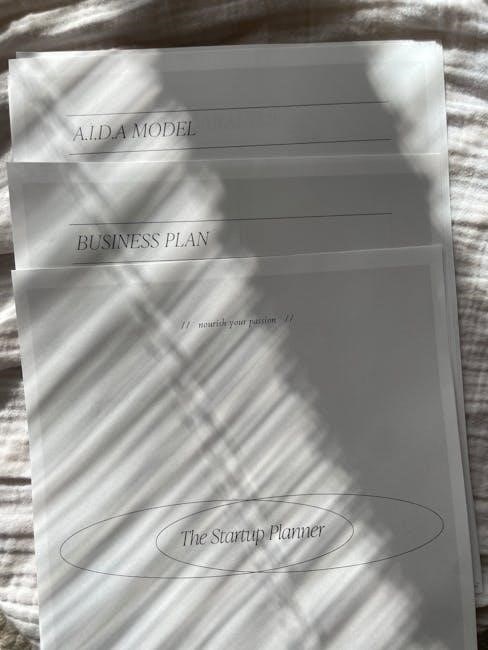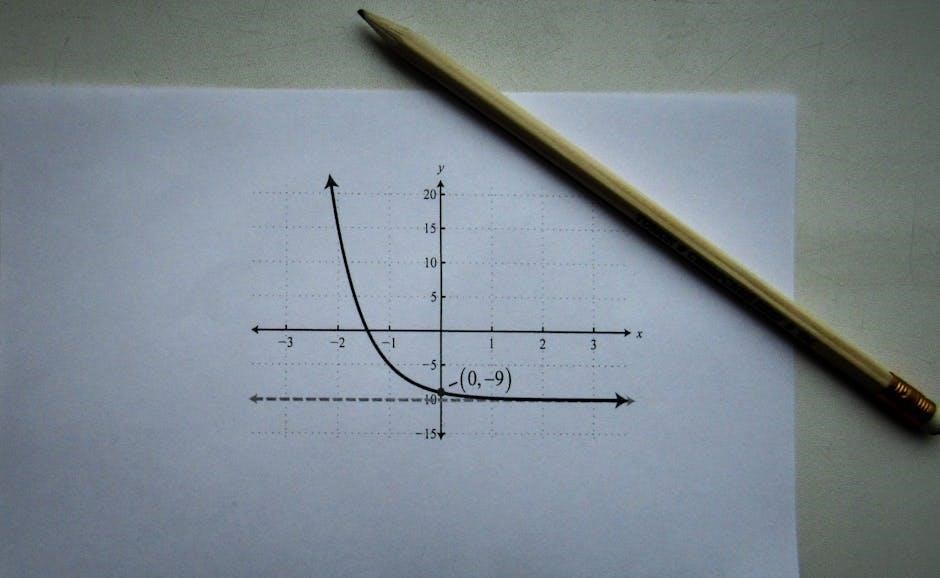Multiplying and Dividing Fractions PDF Worksheet: An Overview
Our multiplying and dividing fractions PDF worksheets provide a comprehensive resource for educators and students. These worksheets are designed to enhance understanding and proficiency in fraction operations. They offer customizable practice, catering to diverse learning needs. Ideal for reinforcing concepts and mastering essential math skills.
Understanding Fraction Multiplication
Fraction multiplication is a fundamental concept in mathematics, involving the process of finding the product of two or more fractions. Unlike addition or subtraction, multiplying fractions doesn’t require a common denominator. The procedure is straightforward: multiply the numerators (the top numbers) together to get the new numerator, and then multiply the denominators (the bottom numbers) together to get the new denominator.
For example, to multiply 1/2 by 2/3, you would multiply 1 by 2 to get 2 (the new numerator), and then multiply 2 by 3 to get 6 (the new denominator). The resulting fraction is 2/6, which can then be simplified to 1/3. This simplification involves dividing both the numerator and denominator by their greatest common factor.
Understanding fraction multiplication is crucial as it lays the groundwork for more complex mathematical operations. It’s widely applied in various real-world scenarios, from cooking and baking to construction and engineering. Mastering this skill enables students to solve problems involving proportions, scaling, and other practical applications. The concept extends to multiplying fractions by whole numbers, where the whole number is treated as a fraction with a denominator of 1.

Fraction Division Explained
Fraction division, though seemingly complex, is a straightforward process once understood. Unlike addition or subtraction, dividing fractions involves a unique step: inverting the second fraction (the divisor) and then multiplying. This method is commonly known as “keep, change, flip,” where you keep the first fraction, change the division sign to multiplication, and flip the second fraction.
For instance, dividing 1/2 by 3/4 requires you to keep 1/2, change the division to multiplication, and flip 3/4 to become 4/3. The problem then becomes 1/2 multiplied by 4/3, which equals 4/6. This resulting fraction can be simplified to 2/3 by dividing both the numerator and denominator by their greatest common factor, which is 2.
This method works because dividing by a fraction is the same as multiplying by its reciprocal. Understanding this concept is crucial for solving various mathematical problems and real-world applications. Fraction division is essential in scenarios such as scaling recipes, determining proportions, and solving algebraic equations. Mastering this operation provides a solid foundation for more advanced mathematical concepts and practical problem-solving skills. The “keep, change, flip” method simplifies the process, making it accessible and easy to remember for students of all levels.

Creating Custom Fraction Worksheets
Crafting custom fraction worksheets offers educators and parents a powerful tool to tailor learning experiences to individual student needs. These personalized worksheets enable the creation of targeted practice, focusing on specific areas where students may require extra support or challenge.
Customization can include adjusting the difficulty level, selecting specific types of fractions (proper, improper, mixed), and choosing the number of problems per page. Furthermore, educators can incorporate word problems that align with real-world scenarios, enhancing engagement and practical application of fraction concepts. This approach allows for a more meaningful and relevant learning experience.
Tools like online worksheet generators simplify the process, providing user-friendly interfaces for designing unique practice sheets. These platforms often offer options to include answer keys, ensuring efficient grading and feedback. By creating custom worksheets, educators can address specific learning gaps, reinforce key concepts, and provide differentiated instruction that caters to diverse learning styles. The ability to personalize content ensures that students receive the precise practice they need to master fraction operations, fostering confidence and success in mathematics. Custom worksheets transform learning from a generic exercise to a targeted, effective, and engaging experience.
Simplifying Fractions in Multiplication and Division
Simplifying fractions is a crucial step in both multiplication and division, ensuring that answers are presented in their most concise form. This process involves reducing a fraction to its lowest terms, where the numerator and denominator have no common factors other than 1. Simplifying fractions enhances clarity and facilitates easier understanding and comparison of fractional values.
In multiplication, simplifying can occur before or after performing the operation. Simplifying before involves canceling common factors between the numerators and denominators of the fractions being multiplied, reducing the size of the numbers involved and making the calculation simpler. After multiplication, the resulting fraction is simplified by dividing both the numerator and denominator by their greatest common factor (GCF).
In division, the process involves inverting the second fraction and then multiplying. Simplifying after this step follows the same principles as in multiplication. Mastering simplification allows students to express fractions in their simplest form, avoiding unwieldy numbers and promoting a deeper understanding of fraction equivalence. Consistent practice with simplifying fractions in multiplication and division is essential for building fluency and accuracy in fraction operations, ultimately improving overall mathematical proficiency.

Mixed Operations: Combining Multiplication and Division
Combining multiplication and division of fractions in a single problem requires a solid understanding of both operations and the order in which they should be performed. These mixed operation problems challenge students to apply their knowledge of fraction multiplication and division in a more complex setting. Typically, these problems involve multiple fractions and require students to carefully follow the correct sequence of operations to arrive at the correct answer.
When tackling mixed operations, it is essential to remember that division can be transformed into multiplication by inverting the fraction that follows the division sign. Once this transformation is complete, the problem becomes a series of multiplications, which can be performed from left to right. Simplifying fractions before or after each operation can help to manage the size of the numbers and reduce the complexity of the calculations.
Proficiency in solving mixed operation problems demonstrates a deeper understanding of fraction arithmetic and enhances problem-solving skills. Students learn to analyze the structure of the problem, identify the correct steps, and execute the calculations accurately. This ability is crucial for success in more advanced math topics and real-world applications that involve fractional quantities and mixed operations.

Word Problems Involving Fraction Operations
Word problems involving fraction operations provide a practical application of multiplication and division of fractions, helping students connect abstract mathematical concepts to real-world scenarios. These problems often describe everyday situations where quantities are expressed as fractions, and students must use their knowledge of fraction arithmetic to solve for unknown values. By translating word problems into mathematical expressions, students develop critical thinking and problem-solving skills that are essential for success in mathematics and beyond.
When solving word problems with fraction operations, it’s important to carefully read and understand the context of the problem. Students must identify the relevant information, determine which operations are required, and set up the problem correctly. This often involves converting mixed numbers to improper fractions, simplifying fractions before or after calculations, and paying attention to units of measurement.
These word problems encourage students to visualize the problem, make estimations, and check the reasonableness of their answers. They foster a deeper understanding of how fractions are used in various contexts, such as sharing, measuring, and comparing quantities. Through these exercises, students not only improve their mathematical skills but also develop the ability to apply these skills to solve practical problems in their daily lives.
Free Printable Fraction Worksheets
Accessing free printable fraction worksheets offers a valuable resource for students, teachers, and parents seeking to reinforce fraction multiplication and division skills. These readily available worksheets provide a convenient way to practice and master fraction operations without incurring any costs. Covering a range of difficulty levels, these worksheets cater to diverse learning needs, from basic fraction multiplication to more complex division problems involving mixed numbers and simplifying fractions.
These printable resources often include a variety of exercises, such as multiplying fractions by whole numbers, multiplying fractions by fractions, dividing fractions by whole numbers, and dividing fractions by fractions. Some worksheets also incorporate visual aids like fraction models and diagrams to help students visualize and understand the concepts better. The availability of answer keys further enhances the learning experience, allowing students to check their work and identify areas where they need additional practice.
The convenience of free printable fraction worksheets makes them an ideal tool for homework assignments, classroom activities, or homeschooling purposes. They provide an opportunity for students to practice independently, reinforce their understanding of fraction operations, and build confidence in their math skills. By utilizing these resources, educators and parents can effectively support students’ learning journey and help them achieve proficiency in multiplying and dividing fractions.
Utilizing Worksheets for Practice and Tutoring
Worksheets serve as invaluable tools for both practice and tutoring when it comes to mastering fraction multiplication and division. The structured format of worksheets allows students to systematically work through various problems, reinforcing their understanding of the underlying concepts and procedures. By engaging with a diverse range of exercises, students can build fluency in multiplying and dividing fractions, identifying patterns, and applying their knowledge to different scenarios.
In a tutoring setting, worksheets provide a framework for targeted instruction and personalized support. Tutors can use worksheets to assess a student’s strengths and weaknesses, identify areas where they struggle, and tailor their teaching approach accordingly. Worksheets also offer opportunities for interactive learning, where tutors can guide students through problems, explain concepts, and provide feedback on their work.
Moreover, worksheets can be used in study groups to facilitate collaborative learning and peer tutoring. Students can work together on problems, discuss strategies, and explain their reasoning to one another, fostering a deeper understanding of the material. By utilizing worksheets in practice and tutoring sessions, educators and tutors can effectively support students’ learning journey and help them achieve mastery in fraction multiplication and division. The availability of answer keys further enhances the learning process, allowing students to check their work and identify areas where they need additional assistance.
Answer Keys and Solutions for Worksheets
The inclusion of answer keys and detailed solutions is crucial for maximizing the effectiveness of multiplying and dividing fractions worksheets. Answer keys provide students with a convenient means of self-assessment, allowing them to check their work and identify any errors they may have made. This immediate feedback is essential for reinforcing correct procedures and correcting misunderstandings.
Beyond simply providing answers, detailed solutions offer a step-by-step breakdown of how to solve each problem. This is particularly valuable for students who struggle with certain concepts or problem-solving techniques. By examining the solutions, students can gain insights into the reasoning behind each step and learn alternative approaches to solving problems.
Furthermore, answer keys and solutions are beneficial for teachers and tutors. They save time by providing a quick and easy way to assess student work. They also serve as a valuable resource for planning lessons and providing targeted instruction. By analyzing student errors, teachers can identify common misconceptions and adjust their teaching strategies accordingly. In essence, answer keys and solutions transform worksheets from mere practice exercises into powerful learning tools that promote understanding and mastery of fraction operations. They empower students to take ownership of their learning and provide educators with the resources they need to support student success.

